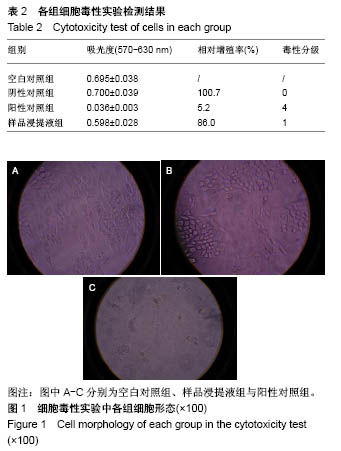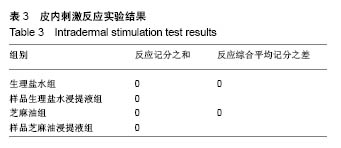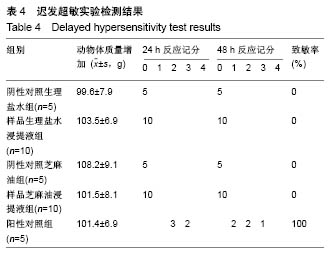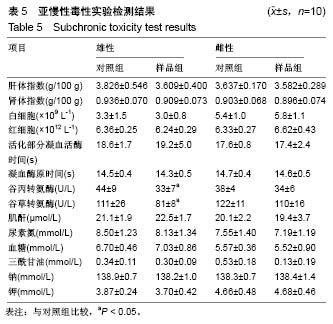| [1] 苏迪娅,刘松,王世炜,等.椎板切除神经根损伤后聚羧甲基葡糖胺产品抗瘢痕粘连的效果[J].中国康复理论与实践, 2015,21(1):45-48.[2] Zheng YY,Liang YQ,Zhang DP,et al.Gelatin-Based Hydrogels Blended with Gellan as an Injectable Wound Dressing.Acs Omega. 2018;3(5):4766-4775.[3] 谢新艺,吕鹏举,颜林.可吸收医用防粘连材料及其性能要求研究进展[J].中国医疗器械信息,2012, 18(8):10-18.[4] 罗军.几种手术防粘连材料的性能比较分析[J].中国医疗设备, 2008, 23(4):128-129.[5] 池余刚,杨晓煜,何萍,等.经皮雌二醇凝胶用于中重度宫腔粘连术后辅助治疗的研究[J].生殖医学杂志, 2016,5(8):691-695.[6] Liu Y,Skardal A,Shu XZ,et al.Prevention of peritendinous adhesions using a hyaluronan-derived hydrogel film following partial-thickness flexor tendon injury. J Orthop Res. 2008;26(4):562-569.[7] Tuncay I,Ozbek H,Atik B,et al.Effects of hyaluronic acid on postoperative adhesion of tendo calcaneus surgery: An experimental study in rats. J Foot Ankle Surg. 2002;41(2):104-108.[8] 张卫国,姜长明.高分子纤维素预防肌腱粘连的实验研究[J].实用手外科杂志,2003,17(4):51-53.[9] Butler J. Hyaluronic acid in synovial fluid. VI. Effect of intra-articular injection of hyaluronic acid on the clinical symptoms of arthritis in track horses. Acta Vet Scand.1970;11(2):139-155.[10] Amiel D,Ishizue K,Billings E,et al.Hyaluronan in flexor tendon repair. J Hand Surg.1989;14(5):837-843.[11] 刘文,常菁,刘万顺,等.壳聚糖基复合膜的制备及预防术后肌腱粘连功能的研究[J].功能材料,2009, 40(3):450-454.[12] 邹剑,张长青.可吸收膜预防鸡肌腱粘连的实验研究[J].中华创伤骨科杂志,2005,7(10):967-970.[13] 肖颖锋.聚DL-乳酸可吸收性防粘连膜预防肌腱粘连的临床应用[C].广东省手外科学学术会议,2005.[14] 唐朝阳.肌腱套管加透明质酸钠局部注射防止肌腱粘连的临床疗效观察[J].中国现代手术学杂志,2008, 12(2):121-123.[15] 王铭河,李大卫.壳聚糖生物膜在结直肠癌手术中的应用[J].临床医药文献电子杂志,2015,2(23):4797-4798.[16] 魏钢.医用防粘连改性壳聚糖膜对胃癌术后腹腔粘连的预防作用[J].实用癌症杂志,2015,30(2):239-241.[17] 金小英,钟少平,陈校丹.羧甲基壳聚糖预防输卵管整形术后再次粘连的疗效研究[J].浙江医学,2017,39(17):1486-1487.[18] 杨君乐,宋华羽.壳聚糖联合马应龙痔疮栓治疗对混合痔术后肛缘创面的影响[J].新中医, 2016,48(4):109-111.[19] 胡畅,吴清玉,郭宝华,等.聚乙烯醇-羧甲基纤维素防粘连膜的生物相容性[J].中华实验外科杂志,2016, 33(7):1822-1825.[20] 梁永辉,磨鹏诗,廖伟明,等.腹腔镜化脓性阑尾切除术后应用壳聚糖预防肠黏连的临床观察[J].海南医学, 2018,29(20):2898-2899.[21] 王汉斌,苏亦兵,史良,等.一种聚己内酯/明胶膜对兔颅骨缺损模型的防黏连作用[J].中国微侵袭神经外科杂志, 2016,21(11):516-519.[22] 何楠,龙安妮,胡畅,等.聚乙烯醇-羧甲基纤维素钠复合膜预防血管开放术后黏连的实验研究[J].中国循环杂志, 2018,33(7):714-718.[23] Montalvo-Javé EE,Mendoza-Barrera GE,GarcíA-Pineda MA,et al.Histological Analysis of Intra-Abdominal Adhesions Treated with Sodium Hyaluronate and Carboxymethylcellulose Gel. J Invest Surg.2016;29(2):80-87.[24] 简军,李睿智,李东风.医用可注射防粘连凝胶及其制备方法:,CN 104307052 A[P].2015.[25] 张玉兰,袁源,常丽,等.可吸收止血膜止血作用的试验研究[J].中国医学物理学杂志,2017,34(8):841-847.[26] Bang S,Ko YG, Kim WI,et al. Preventing postoperative tissue adhesion using injectable carboxymethyl cellulose-pullulan hydrogels. Int J Biol Macromol.2017;105(Pt 1):886-893. [27] 赵瑛,胡巧玲,方征平,等.壳聚糖/明胶防术后黏连膜的制备和表征[J].浙江大学学报(工学版),2004, 38(1):121-124.[28] 林美岑,李寅,胡红文.中度宫腔粘连宫腔镜术后宫腔放置透明质酸钠预防粘连的疗效分析[J].临床医药文献电子杂志, 2017,4(97): 19051-19052.[29] 薛佳佳.基于明胶的生物弹性体及生物医用膜材料的制备与性能研究[D].北京:北京化工大学,2015.[30] Zeng RX,He JY,Zhang YL,et al.Experimental study on repairing skin defect by tissue-engineered skin substitute compositely constructed by adipose-derived stem cells and fibrin gel. Eur Rev Med Pharmacol Sci.2017;21(3 Suppl):1-5.[31] Albiñanacunningham JN, Ripaldacemboráin P, Labiano T, et al. Mechanical barriers and transforming growth factor beta inhibitor on epidural fibrosis in a rabbit laminectomy model.J Orthop Surg Res. 2018;13(1):72.[32] Bülbüller N,Karaka? BR,Y?ld?r?m HT,et al.Effect of a new cross-linked hyaluronan gel on the staple line after sleeve gastrectomy in a rat model. Acta Cir Bras. 2018;33(2):163-174.[33] 迟妍妍,乐尧金,刘旭昭,等.胶原蛋白海绵的生物特性及体内降解吸收[J].中国组织工程研究,2014,18(34):5515-5519.[34] Kean T,Thanou M. Biodegradation, biodistribution and toxicity of chitosan. Adv Drug Deliv Rev. 2010;62(1):3-11.[35] 贾莉芳,袁暾,王亚宁,等.不同用途透明质酸钠凝胶的亚慢性毒性和局部植入反应试验的研究比较[J].生物医学工程学杂志, 2012,29(5): 919-922. |
.jpg)





.jpg)